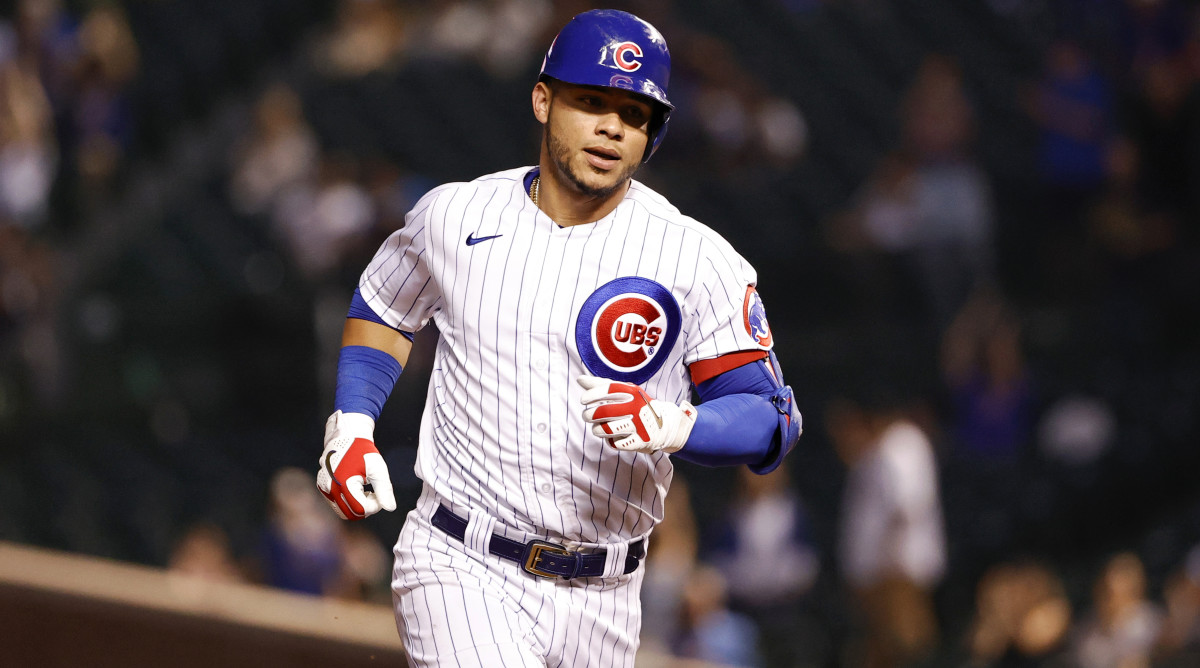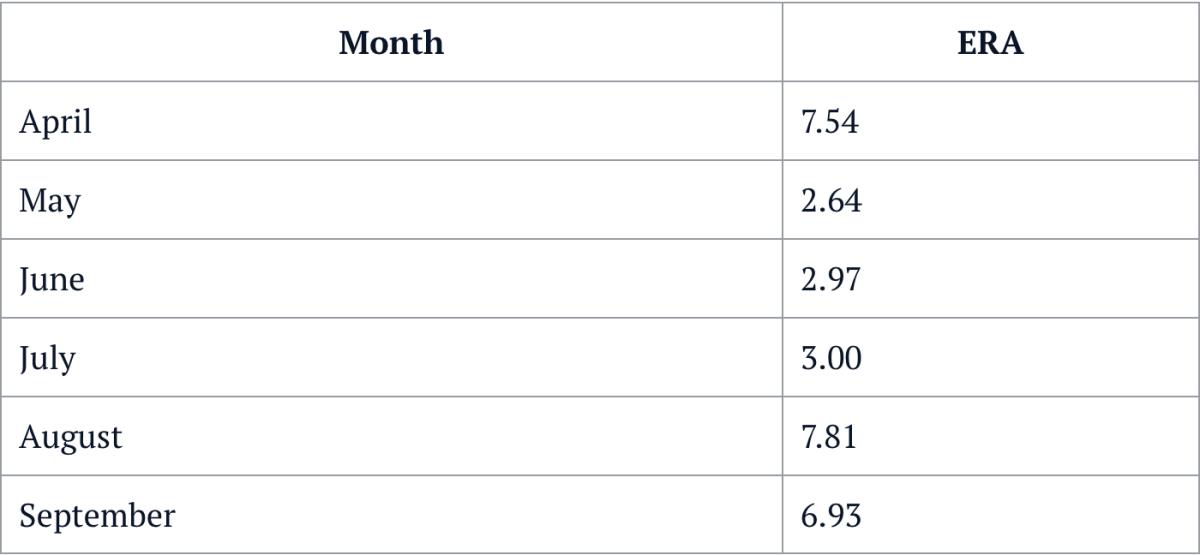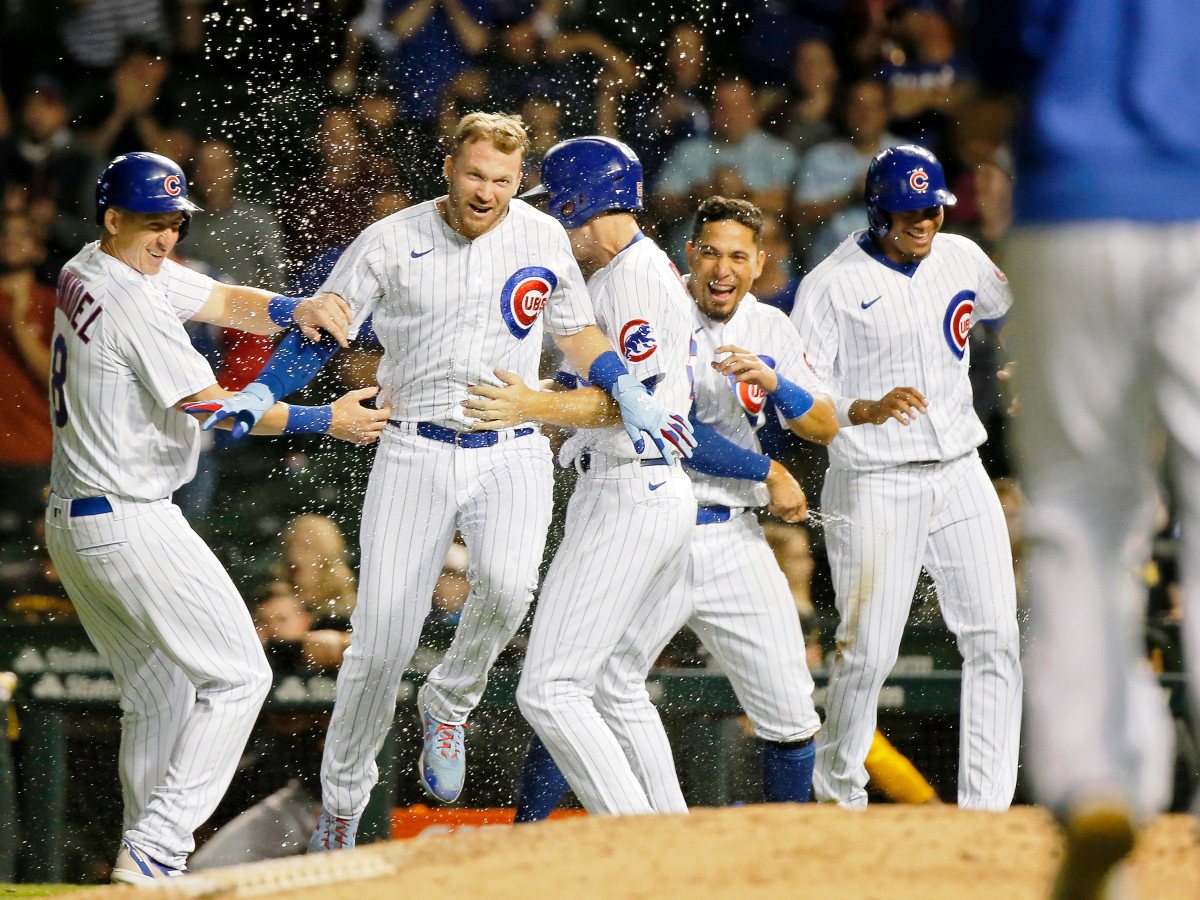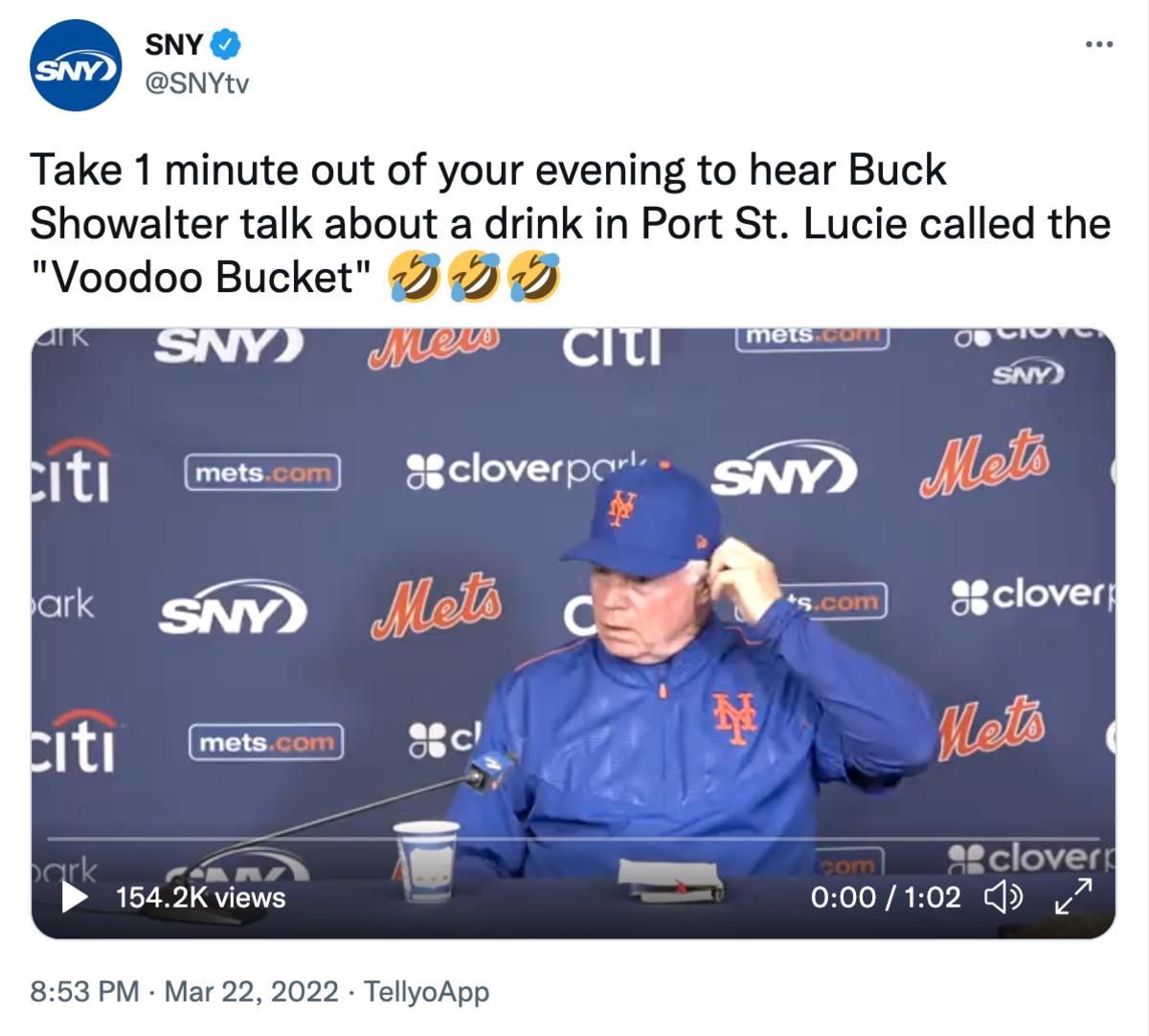The Cubs Are Better Than You Think


When the Cubs executed their trade-deadline fire sale last July—after they had traded Yu Darvish and nontendered Kyle Schwarber in December 2020—it appeared that they would be entering a multiyear transition. Perhaps this wouldn’t be the type of long rebuild they endured a decade ago, but it was hard to imagine they could be competitive after trading Anthony Rizzo, Kris Bryant, Javier Báez and Craig Kimbrel.
It’s true, they are the fourth most valuable franchise in MLB, worth approximately $3.8 billion, according to the latest Forbes estimates; it just seemed like the Ricketts family didn’t want to open up the checkbook. After all, why in the world would they choose to trade their trio of homegrown stars because they didn’t want to pay them only to go ahead and spend money on different free agents in the offseason?
Yet that’s exactly what happened. The Cubs have been one of the most active teams on the free-agent market this winter, before and after the owners initiated the 99-day lockout on Dec. 2. They signed 11 players this offseason who are projected to make their Opening Day roster, per RosterResource. And that count doesn’t include Japanese outfielder Seiya Suzuki, who technically was purchased from the Hiroshima Carp of Nippon Professional Baseball (we included him in our free-agent rankings, anyway), and left-handed starter Wade Miley, who Chicago claimed off waivers from the Reds.
These additions could make the Cubs a surprising contender this season for both the NL Central, which on paper is the weakest in the National League, and one of the three wild-card berths. Here’s why:
Rotation
The Cubs added two of the best starters available, Marcus Stroman (ranked 8th on SI’s top-50 FA list) and Miley, who went 12–7 with a 3.37 ERA and 5.6 WAR last season.
Stroman, who turns 31 in May, has been remarkably consistent over the last five seasons, so long as he’s been healthy. And really, health shouldn’t be much of a concern. He tore his left calf muscle roughly a week before the pandemic-shortened 2020 season was supposed to start, and then a few weeks later while he was rehabbing from the injury, he opted out of the rest of the year due to COVID-19 concerns. He also missed 58 days during the ’18 season with two separate injuries, and his numbers (5.54 ERA, 1.476 WHIP) reflect those of a pitcher who was hurt and never quite found his rhythm when he was on the mound. Otherwise, though, he’s been healthy and effective. He’s made at least 32 starts with ERAs no worse than 3.22 in the three other seasons over the last five years. Pitching in the lighter hitting NL Central, expect Stroman to be at least as strong in ’22.
Miley, 35, will slot in as Chicago’s No. 3 starter after the stingy Reds decided to place him on waivers instead of paying him his $10 million option. His 141 ERA+ ranked eighth-best in the NL; his 5.6 WAR, fifth. He also threw a no-hitter back in early May. It’s worth mentioning that Miley outperformed his peripherals and could be in for a regression, though there are reasons to believe his success wasn’t a fluke.
Performance projections and underlying metrics tend to favor pitchers who get a lot of strikeouts because they are less dependent on their defense and any of the other variables that could be the difference between an out and a baserunner when a ball is put in play. Miley does not strike many people out; he was in the 15th percentile among starters in strikeout percentage and the 31st percentile in whiff rate. But he is excellent at generating soft contact and limiting home runs, which is imperative for pitchers who do allow balls in play. My guess is Miley’s numbers this year fall in line with his average over the last four seasons, since he reestablished himself as a capable big league starter with the Brewers in 2018. Those averages: 13–7, 3.53 ERA, 1.324 WHIP.
Remember Kyle Hendricks? From 2016 to ’20 he was one of the best pitchers in the majors. Across those five seasons, he went 54–39 with a 3.00 ERA and a 1.094 WHIP. His 143 ERA+ ranked sixth among all pitchers to start at least 100 games in that span. Last year was his first truly down year. He did win 14 of his 21 decisions, but he posted full-season career-worst marks in ERA (4.77), hits (200), home runs (31), WHIP (1.348) and ERA+ (89). What the heck happened? Hendricks had three really bad months and three months in which he was your typical Hendricks. Check out his splits:

Like Miley, and to a lesser extent Stroman, Hendricks is more reliant on getting soft contact than he is striking people out. And, in that department, he was still effective even during his rough season. His average exit velocity allowed was ranked in the 92nd percentile. What’s concerning, though, is that opponents started barreling him up at a much greater clip than they usually do. His 8.4% barrel rate was 61.5% worse than his career mark of 5.2%. For now, I’m going to consider Hendricks’s 2021 season to be a product of those three awful months instead of the start of an irreversible career regression.
Bullpen
The Cubs signed five relief pitchers this offseason, four veteran righthanders—David Robertson, Mychal Givens, Chris Martin and Jesse Chavez—and lefty Daniel Norris, who has had a fairly erratic eight-year big league career, mostly with the Tigers.
I can’t say this is going to be a strength for the Cubs, but these five additions plus 29-year-old Rowan Wick, in his first year as a projected closer, are far from the worst group Chicago could’ve assembled.
Position players
This lineup could either be one of the more productive ones in the NL or one of the worst. What you expect from the Cubs bats hinges largely on whether you believe that first baseman Frank “the Tank” Schwindel and third baseman Patrick Wisdom are capable of sustaining their power from their 2021 rookie seasons.
Wisdom finished fourth in the Rookie of the Year voting last year after belting 28 home runs in 106 games. At 30, he is old for his level of experience, and it remains to be seen whether he’s truly a late bloomer or simply a one-year wonder. Cubs fans should be a bit concerned about his astronomical strikeout rate (40.8%).
The Cubs claimed Schwindel off waivers from the A’s in July, and he immediately took off after replacing Rizzo at first. Across 56 games with Chicago, he slashed .342/.389/.613 with 13 home runs and 40 RBIs. Like Wisdom, Schwindel, 29, was an older rookie; unlike Wisdom, Schwindel (15.8% strikeout rate) was not an all-or-nothing guy. The best comp to what the Cubs could get from Schwindel is what Luke Voit gave the Yankees from 2018 to ’20. Voit, another late bloomer who didn’t get much of a shot with the Cardinals, was traded to New York before the ’18 trade deadline and mashed upon his arrival (.333/.405/.689 in 39 games). He followed that up with a solid ’19 campaign and then led the majors with 22 home runs in the pandemic-shortened ’20 season. Voit strikes out and walks more and is bigger than Schwindel, so this isn’t a direct comp. Still, there is some promise and a recent example that Schwindel could build off his breakout year.

The heart of the Cubs order—catcher Willson Contreras, outfielder Ian Happ and Suzuki—should be quite good. Contreras, who turns 30 in May and is entering his final year before reaching free agency, is one of the best catchers in baseball. Last season was a down year for him offensively (.237/.340/.438), yet he still ranked second among NL catchers with 21 home runs.
Happ’s first few seasons were a bit bumpy after an impressive 2017 rookie year. His talent was undeniable, but inconsistencies and strikeout vulnerabilities led to his demotion to Triple A for the first half of ’19. Upon his return he raked like the Cubs had always expected he would. In a combined 115 games in ’19 and the abbreviated ’20 season, Happ hit .260/.350/.530 and cut his strikeout rate from 36.1% in ’18 to 26.4%. Last year was a bit of a step back (.226/.323/.434), but he did hit 25 home runs. Only 27 years old, Happ’s best should still be ahead of him.
Then there’s Suzuki, who was one of the premier power hitters in the NPB. Will Laws and Nick Selbe ranked him as the No. 17 free agent of the offseason. Here’s what they had to say about him:
“In 133 games last season, he hit a career-high 38 home runs with a .319/.436/.640 slash line. Over the past three years, Suzuki has more walks (263) than strikeouts (241), with 91 home runs in 391 games. Suzuki is a right-handed hitter who’s spent some time in the infield during his career but has played exclusively in the outfield since 2015 and projects as a right fielder. Though strikeout rates in NPB are not as high as in MLB, Suzuki’s modest 16.4% strikeout rate since '18 is an impressive mark for a power hitter of his caliber.”
The Cubs also upgraded their lineup along the margins with the signings of veteran infielders Andrelton Simmons and Jonathan Villar. Second baseman Nick Madrigal, the Cubs’ main return from the White Sox in the Kimbrel trade, is one of the best young contact hitters in baseball. Nicknamed Nicky Two Strikes for his prowess of getting knocks with two strikes, he looked to be the second baseman of the future on the South Side before he tore his hamstring in June and had season-ending surgery, an injury that made him expendable for the playoff-bound Sox. The 25-year-old Madrigal should be the everyday second baseman for the Cubs moving forward.
Overall evaluation
The Cubs probably won’t make the playoffs this year, but they’ve done enough this offseason to contend well into September. More encouraging for the North Siders, though, is that the organization isn’t that far off. Then again, maybe that’s cause for disappointment.
After all, it’s worth considering how good this team would be had they decided to pay at least one or two of the Bryant, Rizzo and Báez trio instead of trading them away.
Have any questions for our team? Send a note to mlb@si.com.
1. THE OPENER
“They won’t have to beat the 2021 version of themselves to get to where they want to be in 2022.”
That’s how Nick Selbe sums up his preview of the Giants entering the 2022 season. They won 107 games last year and went from NL West afterthought to division champion. Can they repeat their magic and outpace the mighty Dodgers once again? You can read Nick’s full column below:
Giants Don’t Have to Chase Last Year’s Ghosts by Nick Selbe
San Francisco has reshuffled the roster effectively enough during the offseason to instill confidence for 2022, even if it doesn’t win 107 games again.
2. ICYMI
More major signings went down since last week’s newsletter. Let’s recap those moves.
Late last Friday, the Phillies signed Nick Castellanos to a five-year, $100 million contract. For those of us baseball fans who love absolutely chaotic moves, this deal might be the most exciting one of the entire offseason. Why? The Phillies have fallen just short of the playoffs over the last few seasons. Their lineup and top of rotation would’ve been more than good enough for them to make the postseason if their bullpen and defense were merely bad. Instead, they’ve been historically God-awful in those two areas.
It’s true Philadelphia has improved its relief pitching a bit with the additions of Corey Knebel, Jeurys Familia and Brad Hand, among others. But if anything, its defense has gotten worse. Castellanos is one of the worst defensive outfielders in baseball. The good news for the Phillies is that the NL does have a designated hitter this year. The bad news is that Castellanos might end up playing the field anyway because he might not be the worst, or even the second-worst, fielder on their team. Kyle Schwarber, their other new bopper, is projected to be their DH, per RosterResource, and third baseman Alec Bohm was worth -13 defensive runs saved last year. The Phillies lineup also features first baseman Rhys Hoskins (-7 DRS) and shortstop Didi Gregorius (-10).
Phillies Sign Outfielder Nick Castellanos to Five-Year Deal by Daniel Chavkin
At 1:41 a.m. Saturday, Fox 26 Houston’s Mark Berman broke the stunning news that Carlos Correa, this offseason’s top free agent, had agreed to a three-year, $105.3 million deal with the Twins. The contract includes opt-outs after his first two seasons.
Correa’s signing was the culmination of a magnificent week of moves for Minnesota. We covered the trades for Sonny Gray, Gary Sánchez, Gio Urshela and Isiah Kiner-Falefa (whom they flipped in the deal for Sánchez and Urshela) in last week’s newsletter. Emma Baccellieri, who is on assignment covering the NCAA women’s basketball tournament, wrote this excellent analysis piece of the Correa deal.
Carlos Correa’s Move to Minnesota Could Be a Perfect Match by Emma Baccellieri
After limping to last place in the AL Central in 2021, the Twins picked up the best free agent in baseball through a quirky contract that allows the shortstop to test the waters again in free agency as soon as next year.
The next day, Trevor Story, the last of the superstar shortstops in this loaded free-agent class of them, signed a six-year, $140 million contract to play second base with the Red Sox. Xander Bogaerts will remain at short for Boston this season.
Yesterday, ESPN’s Jeff Passan reported that Story’s deal with the Red Sox nearly fell apart due to the two-time All-Star’s hesitation to get the COVID-19 vaccine. The deal wouldn’t become official until Story agreed to get vaccinated Tuesday.
As Stephanie Apstein reported March 15, the Red Sox have been doing whatever they can to encourage all of their unvaccinated players to get the shot before the season starts. Several players, including Bogaerts, who were not vaccinated during the team’s COVID-19 outbreak late last season have since received or have agreed to receive the vaccine. All unvaccinated players are prohibited from playing games in Toronto this year; Boston is scheduled to play 10 regular-season road games against the Blue Jays, which is why many of the previously unvaccinated Red Sox decided to get it.
Story didn’t elaborate on why he ultimately changed his mind, calling it a “personal matter,” but he did tell Passan, “I’ll be available for my teammates 162-plus. That’s the main part.”
Report: Trevor Story’s Red Sox Deal Nearly Fell Apart Over Vaccine Concerns by Nick Selbe
Speaking of vaccines, yesterday NYC mayor Eric Adams signed Executive Order 62, which exempts athletes and performers, including Yankees and Mets players, from the city’s private business vaccine mandate.
NYC Mayor Announces Unvaccinated Athletes Can Now Play in Home Games by Joseph Salvador
Veteran reliever Andrew Miller announced his retirement yesterday in a story by Derrick Goold of the St. Louis Post-Dispatch. Normally I use this space to highlight the work of our writers, but I want to give a special shout-out to Derrick’s excellent piece commemorating Miller’s game-changing career.
‘He changed the game’: Andrew Miller, who ‘revolutionized’ relief and played leading role for MLBPA, retires by Derrick Goold, St. Louis Post-Dispatch
Last month, Emma spoke with Miller about his role in helping to lead the MLBPA while bargaining with MLB for a new CBA. You can read that interview here.
Andrew Miller Explains Key Issues for Union in MLB Lockout by Emma Baccellieri
3. BREAKING NEWS from Tom Verducci
I wanted to make this report from Tom its own separate section since this story was just reported this afternoon. Our worth-noting section will be back next week.
MLB Further Cracks Down on Sticky Stuff Due to Suspected Cheating by Tom Verducci
Umpires will conduct different inspections this year as pitchers seemingly found ways to circumvent checks in late 2021.
4. TRIVIA! from Matt Martell
Before we get into this week’s question, here is the answer to the one I asked last Friday.
Last Week’s Question: Kris Bryant’s seven-year, $182 million deal with the Rockies is the largest free-agent contract in franchise history. Which player previously signed the largest free-agent deal with the Rockies?
(This question does not include contract extensions, such as the eight-year, $260 million deal Nolan Arenado signed with Colorado before the 2019 season.)
Answer: Left-handed pitcher Mike Hampton, who signed an eight-year, $121 million contract with the Rockies in December 2000.
This Week’s Question: From 2012 to ’17, Andrew Miller ranked second among all relief pitchers with a 212 ERA+ (minimum 300 innings). Who was first?
5. THE CLOSER from Nick Selbe
With Emma on women’s tournament duty, I’m your closer this week. Don’t worry, she’ll be back to answer your mailbag questions in time for Opening Day. Feel free to tweet at her @emmabaccellieri or email us your questions mlb@si.com.
The Mets had just completed their fourth spring training game of the year when their manager had a pressing matter to address during his media session: the existence of the alluring yet mysterious “voodoo bucket.”
The drink offering at the team’s spring training facility—one that can safely be assumed to contain multiple varieties of alcohol—vexed Buck Showalter, and his musings on the menu item provided a glimpse at just how much the baseball lifer has been missed during his three-year managerial absence. At first, the 65-year-old skipper believed the voodoo bucket to be “hot chicken wings or something,” only to realize he had missed the mark.
“Let’s put it this way,” Showalter said, “it’s a drink that comes with four straws.”

The last time Showalter manned a dugout was at the helm of the 2018 Orioles, who lost a franchise-record 115 games in the midst of a still ongoing rebuild. Showalter’s Mets have far loftier aspirations, and though the franchise has been unable to get out of its own way for ages, there’s plenty of reason to believe that this could be a banner summer in Queens. Mets fans have enough reasons to pin their hopes on this year’s squad, but baseball neutrals can look to Showalter as reason enough to jump on board the bandwagon as well. The veteran skipper is part of baseball’s old guard, and his dry sense of humor and affable candor make him imminently easy to root for. So, too, does his “just barely missed it” track record: Showalter twice has left organizations the year before they won the World Series—first with the Yankees in 1995, then the Diamondbacks in 2000—and is still searching for his first title. With the aggressive acquisitions of this offseason and the key pieces already in place, it’s not out of the realm of possibility for the Mets to cash in big in his first season with the team.
And if they do, it’s a safe bet that the voodoo bucket will make an appearance for the clubhouse celebration.
Editors’ note, March 25 at 9:51 p.m. ET: An earlier version of this newsletter provided the incorrect answer to last week’s trivia question. The answer is Mike Hampton, who signed an eight-year, $121 million contract with the Rockies in December 2000, not Ian Desmond who signed for five years and $70 million in December 2016.
That’s all from us today. We’ll be back in your inbox next Friday. In the meantime, share this newsletter with your friends and family, and tell them to sign up at SI.com/newsletters. If you have any questions or comments, shoot us an email at mlb@si.com.
